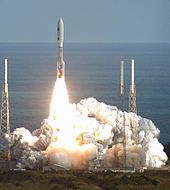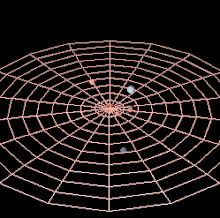Is Pluto really a Planet or not?
believed only another body large enough to exert a strong enough gravitational field could affect Neptune and Uranus' orbits.
 |
| (Source- Wiki) |
This discovery turned out to be the result of a happy accident. The calculations that predicted the existence of a planet beyond the orbit of Neptune later proved to be in error. The Voyager 2 spacecraft was able to measure the mass of the planet Neptune more accurately When this new data is used the variations in the orbits of Uranus and Neptune disappear.
None the less the new planet was dubbed Pluto. Several names were suggested including Zeus, Cronus and Minerva. But in 1930 Pluto was officially labeled the ninth planet by the International Astronomical Union and named for the Roman god of the underworld.
 |
| Clyde Tombaugh the discoverer of Pluto.(Source- Wiki) |
The composition of Pluto is unknown, but its density (about 2 gm/cm 3) probably indicates it is a mixture of and 30% water ice and 70% rock. The bright areas of the surface appear to be covered with ices of nitrogen and smaller amounts of methane, ethane and carbon monoxide. The composition of the darker areas on Pluto's surface is not known.
Pluto does have an atmosphere which probably consists mostly of nitrogen with some carbon monoxide and methane. It is extremely thin with a surface pressure of only a few micro-bars Pluto's atmosphere probably exist as a gas only when Pluto is near the Sun. For the rest of Pluto's long orbit the atmospheric gases are frozen solid. Near the Sun it is possible that some of the atmospheric gases escape into space. NASA mission planners hope to arrive at Pluto while the atmosphere is still in gas form.
In 1978 it was discovered that Pluto has a moon. Officially named Charon after the mythological figure who ferried the dead across the River Acheson into the underworld. Charon was discovered by Jim Christy and may have been named in honor of his wife Charlene. Before the discovery of Charon it was believed Pluto was much larger since the images of the two were blurred together.
Pluto and Charon are unique in that they rotate synchronously with each other. Which means they both keep the same face toward one another. It has been suggested that Charon was formed by a giant impact against Pluto similar to the one that formed Earth's Moon. In 2005 a team using the Hubble Space Telescope discovered two tiny moons orbiting around both Pluto and Charon. They have been named Nix and Hydra. They are very small with diameters between 40 and 60 kilometers.
Recently there has been considerable debate about the classification of Pluto. It was classified as the a planet just after its discovery and remained so for 75 years. But on 2006 Aug 24 the International Astronomical Union decided to change the definition of a "planet". The new definition does not include Pluto. Instead Pluto is now classified as a "dwarf planet". Personally I don't agree with taking away Pluto's status as a planet. Maybe I am being superstitious, but as any sailor worth his salt will tell you it is generally considered bad luck to change the name of a ship once she was been christened.
 |
| Pluto's orbit and the ecliptic. (Source- Wiki) |
I hope very much that all goes well and the New Horizons space-probe sends back a wealth of information about "Planet X" or Pluto as it is known. Perhaps then we will be able to settle the debate as to whether Pluto is really a planet or not.
(Source- Wiki)

No comments:
Post a Comment